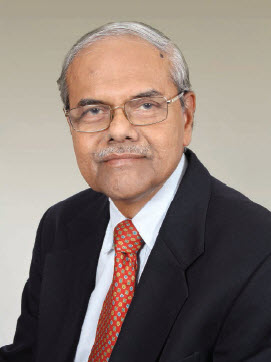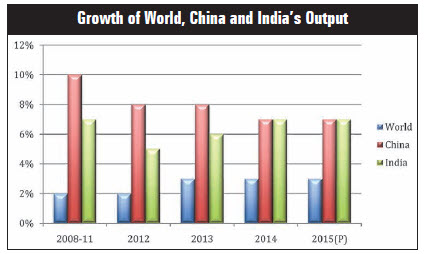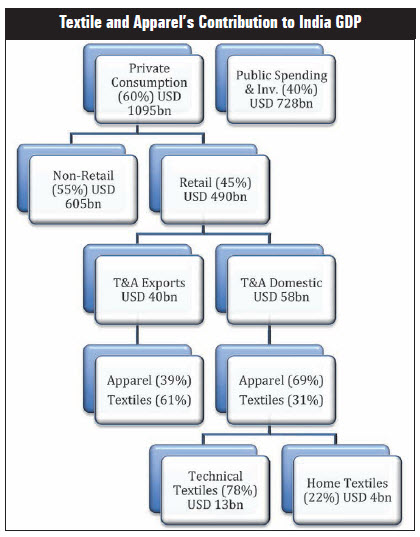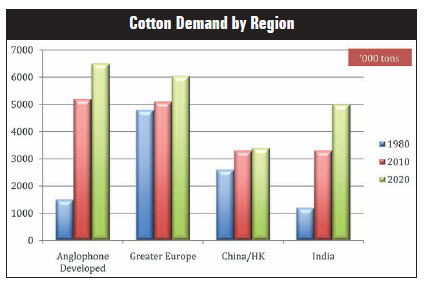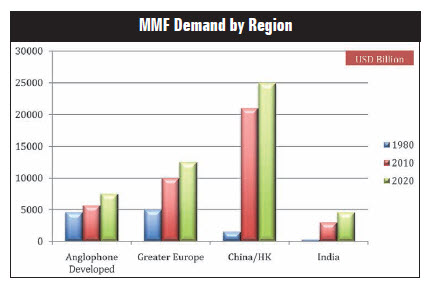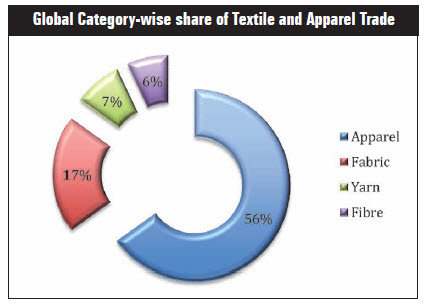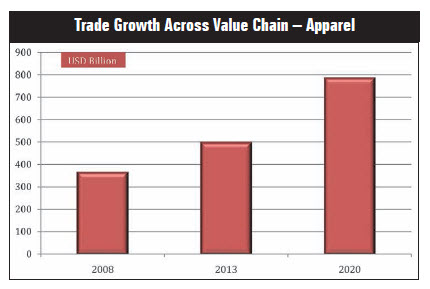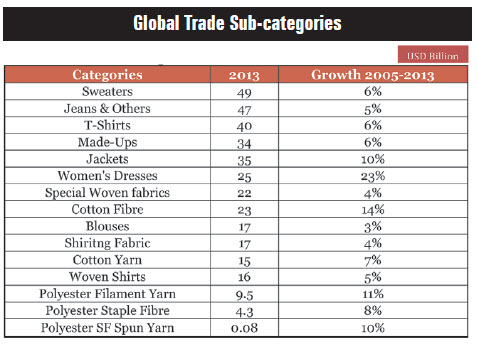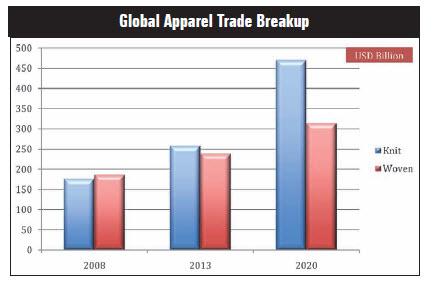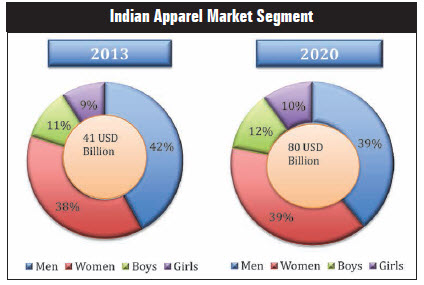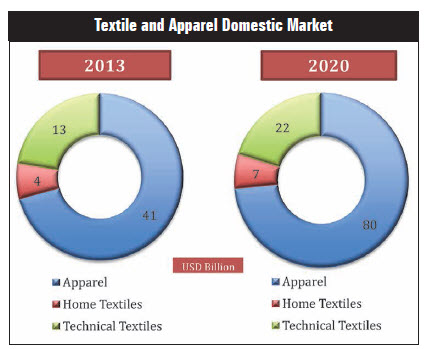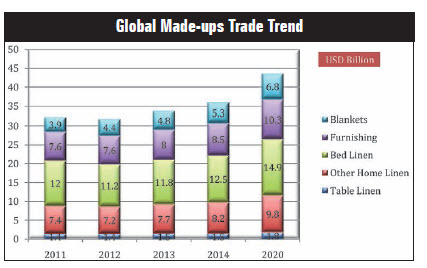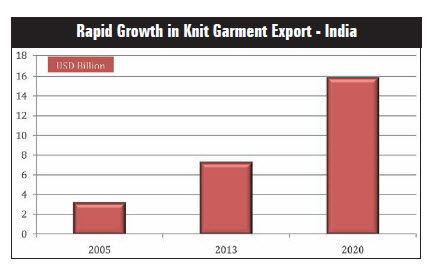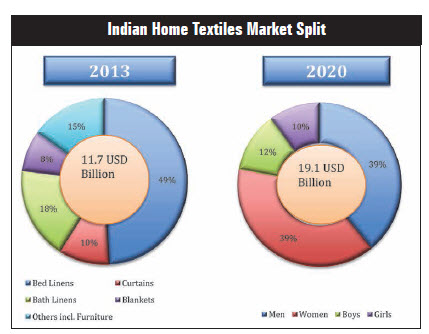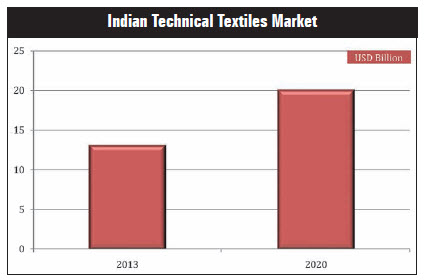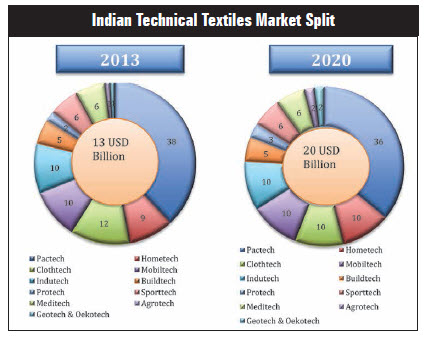By Dr. P.R. Roy, Nirav Shah & Harshil Chokshi, Diagonal Consulting (India)
“Whoever says Industrial revolution says Cotton” – Hobsbawm. In the sixteenth Century cotton turned out to be the most important manufactured goods in the world trade. In the centuries that followed the bulk of cottons that crisscrossed the globe had their origins in the Indian sub continent, the pre-eminent centre for cotton manufacturing in the world until the nineteenth century Industrial Revolution. Economic Historians Observe “In shaping markets and serving fashion, Indian cottons prepared global consumer markets for the modern industrial age”.
In the intervening centuries India had to lose this leadership due to the Industrial Revolution in Britain that mechanized the Textile Industry. For more than 2 centuries the textile operations in terms of manufacturing, new products and fashion shifted towards the western world that were led by Europe and USA. This got a huge support with the advent of Man-made fibres sometime by the end of nineteenth century. Innovation, in terms of technology development and newer applications of raw materials such as cotton, flax, wool, silk and a whole host of man-made cellulosic and synthetic fibres allowed the west to continue the leadership. All these got huge support post World War II in terms of world trade policies that was obviously in favour of western world.
Subsequently, huge industrialisation in Asia and some other parts slowly made textile and apparel operations somewhat uneconomic in the western world. By the beginning of 2005 the world of textiles became free of quota i.e. there was no restriction in terms global trade. An unprecedented growth in China followed by India turned out to be hallmark of the industry.
A massive growth in the production of textile fibres catering to growing population particularly in the Asian continent led to major technological breakthrough for catering to newer needs, fashions and matching higher disposable incomes. India after centuries of gap is strongly positioning itself to have the major pie of such global changes.
An Outlook of Indian Economy
“In 2014-15, the Indian economy retained its position as one of the largest in the world with a promising outlook. This optimism was inspired by moderated inflation, domestic demand growth, increased investments and declining oil prices, among other factors.
On the demand side, growth in private final consumption increased from 6.5% in 2013-14 to 7.6% in 2014- 15. The RBI tightened its monetary policy, which helped contain demand pressure, creating a buffer against external shocks and keeping currency volatility under check.
The average WPI (Wholesale Price Index) inflation for 2014-15 declined to 3.4% (April-December), compared to 8.9% in 2013-14, largely influenced by a decline in fuel prices. Food price inflation moderated to 4.8% during April-December, 2014 compared to 9.4% in 2013-14.
Following a decline in inflation and other conducive environments, the RBI cut policy repo rates by 50 bps (to 6.75%) in September 2015. RBI also reduced the SLR (Statutory Liquidity Ratio) in January 2015 by 50 bps to 21.50% of net demand and time liabilities.
For 2015-16, the Economic Survey pegged real gross domestic product growth (at market prices) 7.6% which was 0.6-1.1 percentage points higher than estimates for the current financial year. In the short run, growth is likely to be boosted by a combination of lower oil prices and monetary policy easing.”
“Over the past decade, China has accounted for an average of 1.6% points of the world GDP growth per year – more than double the combined 0.7% points contribution of the so called advanced economies. Even if its GDP growth slows to 6.8% this year China would account for slightly more growth than is likely from the advanced world.”
In the context of above mentioned Indian economy outlook, it would be interesting to look at the global textile raw material scenario to appreciate the present trend. One may note that the world at this stage produces close to 90 billion kgs of textile raw material. The current world population is close to 7.2 billion.
About 12.7 kgs per capita consumption of textile raw materials seems to be the present status. World population is expected to grow around 8 billion in 2020, when global fibre production is expected to touch 105 billion kgs during which the per capita fibre consumption is expected to grow to 13.1 kgs. India, historically has always been a low fibre consuming country wherein today per capita consumption is just around 7.5 kgs which is significantly lower than the global average. The adjoining figures depict India’s fibre, yarn and fabric production present as well as projected till 2020.
Cotton being still the heart of global apparel fabric consumption by quality consumers, it is important to have a look at its demand by different region. The current pattern has been shown in figure. Inspite of pratically no expected growth in cotton fibre production it is very interesting to notice its demand by advanced economies. Cotton continues to serve the fashion orientedupmarkets in Europe, USA and some other countries. India seems to be in a strong position to cater to this continued need as major cotton supplier.
Manmade fibres in the recent period has grown significantly in India with special emphasis on polyester staple fibres and filaments and viscose staple fibres. Exports of such materials also have increased significantly. The demand by different regions globally of manmade fibres is shown by the figure.
China by far dominates the demand, production of MMF compared to all other regions in the World. India inspite of appreciable growth in the recent times still lags China and Greater Europe in big way. It is becoming obvious that some special thrust needs to be provided to make India stronger in this sector.
As expected, apparel sector leads the growth in the global trade followed by the fabric. In the coming years in terms of value the gap between the two sectors may be much more pronounced. Judicious investments and tactical approach in garment manufacturing could be of major interest for Indian entrepreneurs.
Apparel trade is moving up faster in the value chain. This would obviously push in near future a corresponding growth in the consumption of yarns and fabrics in the apparel producing countries.
The global apparel trade experiences a big change in the last couple of years in favour of knitted garments that have become the darling of modern consumers. The trend is likely to continue for some time to come.
The huge growth in India’s apparel market size reflect that in near future both men and women apparel would grow at a common pace. Similarly boys and girls’ would also equally grow, of course with much lower proportion of the market size.Shirts dominate the menswear market segment followed by trousers and denims. T-shirts are expected to grow rapidly in the context of consumerism. Saree still leads the womenswear market in India followed by salwar kameez and innerwears.
Due to the past policy, Indian garment sector has been a late entrant as the segment was reserved for the small-scale industry. Once opened up, this sector too has grown significantly in the last decade and has started exporting in an appreciable way.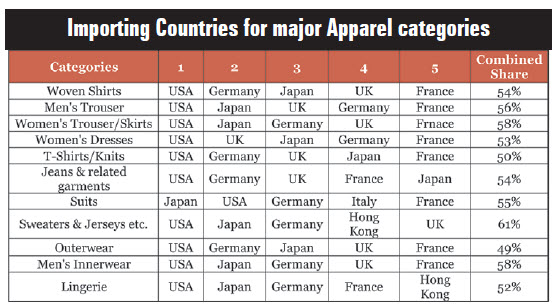
India’s very strong presence in the field of cotton fibre, yarns, woven and knitted fabrics and garments make it the right hub for future investments both by domestic and international players to explore the opportunities. Government of India’s just announced restructured policy on Technology Upgradation Fund Scheme (TUFS) and its continuance is likely to keep the current investment mood charged.
Knits for outerwears particularly in the form of men’s and women’s tees/polo shirts have been one of the fastest growing garment segments in the export trade of India. The pace of growth is phenemenol and likely to continue. One sees the same trend within the country for the home market.
Home Textiles covered under different categories but led by bed linen have been the fastest growing finished textile sector from India.
Technical textiles, a rapidly growing segment in the advanced economies supported by application of science and technology in the industrial growth have currently been an important area of exploration by the Indian textiles and industries’ sector. Significant R&D pushed by government policy backup has been making this sector advancing on its own as well as with the innovation and support of international R&D leaders representing top universities and institutes.
Export, obviously is an integral part of any country’s dominant business segment such as textiles in India, needs to be regularly tracked. The category- wise product segments that are very prominent in the export baskets of many countries but somewhat poor or missing in the India’s ones call for an urgent review.
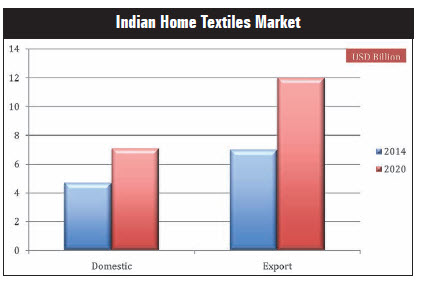 Investments in such hitherto untapped product segments are becoming crucial for the eventual growth of textiles and apparel export from India. Various recent international developments through multilateral understandings needs to be well understood wherein many large countries having significant presence in T&A sector may pose some threats.
Investments in such hitherto untapped product segments are becoming crucial for the eventual growth of textiles and apparel export from India. Various recent international developments through multilateral understandings needs to be well understood wherein many large countries having significant presence in T&A sector may pose some threats.
One such recent development of much significance is TPP (Trans Pacific Partnership) covering twelve countries to start with and 40% of the global GDP.
India now being out of this scheme may have to look at such developments in depth and to plan for future actions to maintain its supremacy in certain areas of export such as cotton fibres, yarns, fabrics, including that of home textiles and garments .
Manmade fibre sector is likely to be an integral part of this new approach.
One such option for India to counteract this recent development (TPP) may be to explore joining Regional Comprehensive Economic Partnership (RCEP). Moreover recent efforts to strike a deal with EU for a Free Trade Association (FTA) might go a long way to make Indian textiles and apparel stronger and competitive in the future.
Remarks and observations
Natural fibres are not growing. Cotton, the primary one, till date has not shown any clear indication about its growth in India though the positive expectation prevails.
Global developments in fibres point towards rapid growth of manmade fibres to take care of population growth, enhanced per capita consumption, varied consumer and fashion needs.
Further locational changes have been happening in the recent past and newer growth centres are emerging in terms of T&A manufacturing, consumption and trade.
Very few countries are fairly balanced in terms of vertical integration of the textile value chain barring India and China till date. India is rapidly growing on this front.
The detailed contents of the present write up covering all important global and Indian textile and apparel data andstatistics reveal a very interesting fact that India is going to be a very important destination for the flow of emerging technologies.
ITMA, that comes out every four year with the developments taking place in different segments of textile technology and related fields may find India as a major hub for the future in the growing business/investment opportunities in that part of the world.
Indian entrepreneurs, who may be visiting the MECCA of textile machinery development, in turn may plan for their futuristic investments in consultation with the technology providers.
Growth in fibres, yarn, fabrics, home textiles and apparel may continuously demand much larger inflow of new technologies to keep India competitive that caters to global needs and future fashion conscious consumers.
Technical textiles is another promising growth sector for India that may become the target of advanced technology providers in near future.
Indian textile machinery developments, in general has never been rapid and innovative. Excepting a very few, a majority followed a typical pattern devoid of any significant R&D in this field.
References: UN Comtrade, WTO, ITMF, Office Textile Commissioner (India), Ministry of Textiles (MOT) & PCI
